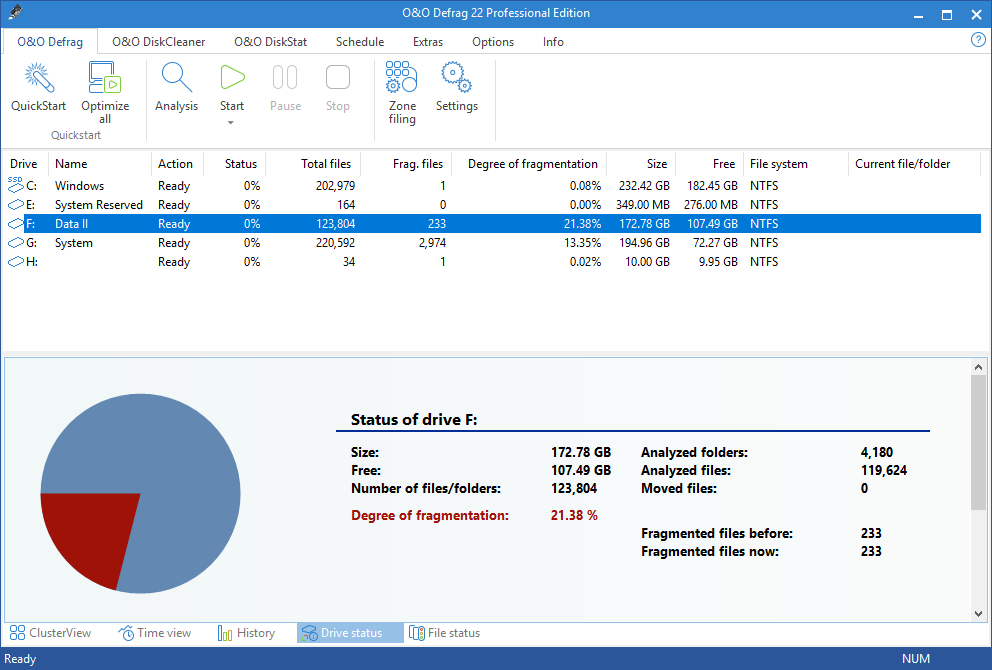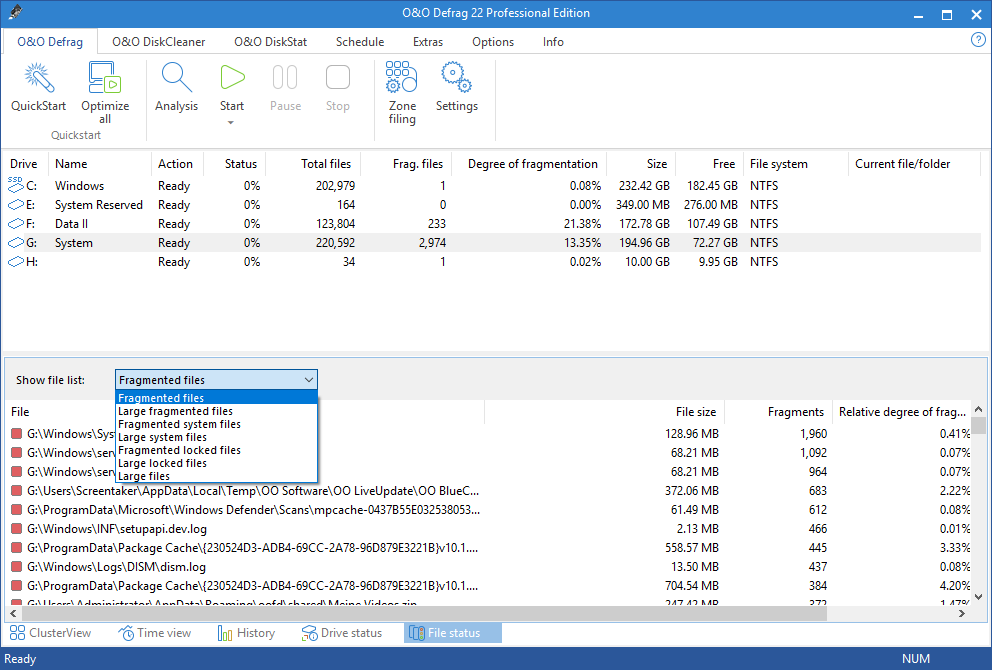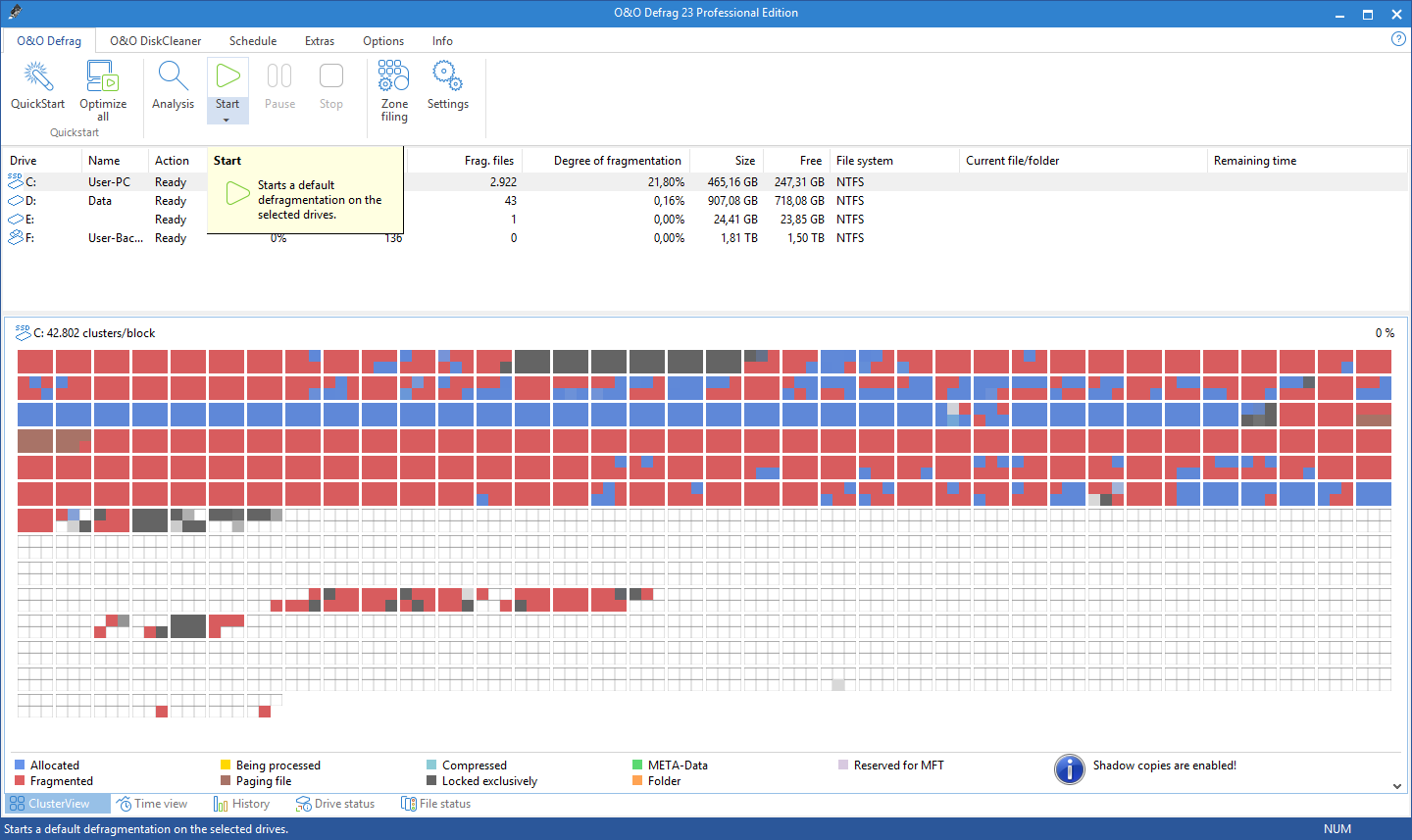O&O Defrag offers various options for receiving further information about defragmentation. The tabs in the lower section of the "O&O Defrag" ribbon will help you switch between the categories explained below.
Progress
The progress bar illustrates recent actions you have run. For each drive there’ll be a brief summary displaying the results of any corresponding action.
History
Thanks to clearly displayed statistics, you can tell what effect a regular defragmentation is having on your system and you can track the success over weeks and months. You can monitor how many files have been sped up and how many excessive file fragments have been put together, for example. Based on the, you can then adjust your settings to match the defragmentation to your computer habits in order to get the best results.
Drive status
Displays information about the conditions of selected drives before and after defragmentation.
Here you can find information about your drive, the amount of space being used on it, and the file system. The refreshed pie chart will dynamically represent the proportional level of fragmentation during a defragmentation run.
The Status for the entire drive informs you about both the analyzed as well as the non-analyzed files and folders. A new evaluation occurs dynamically with each defragmentation.

O&O Defrag: Drive status
File status
File Status provides an overview of the largest and most heavily fragmented files on your drive. The contents of this file system statistic can also be found in the status reports. You have to first analyze the file statistics of a drive in order to have them displayed here. This will occur after you click Analysis in the Ribbon bar.
Files can be listed according to various criteria with the Sorting drop-down menu.

O&O Defrag: File status
O&O Defrag allows you to defragment individual drives or entire computers with just a few mouse clicks.

Start defragmentation
The first defragmentation usually requires the most time because O&O Defrag has to check your entire system and move all files into their optimal position. This is especially the case with systems that have been in use for a long time and have rarely or never been defragmented.
The COMPLETE methods in particular are very time-consuming because the entire file structure needs to be optimized, which involves moving even files that are not fragmented.
We therefore recommend an initial defragmentation with the STEALTH or SPACE methods. These methods consolidate your hard disks very quickly and efficiently. Afterwards, you can use the COMPLETE methods for optimum performance or stick to the quicker STEALTH and SPACE methods. Whichever method you choose, your system will be significantly quicker than it was before!